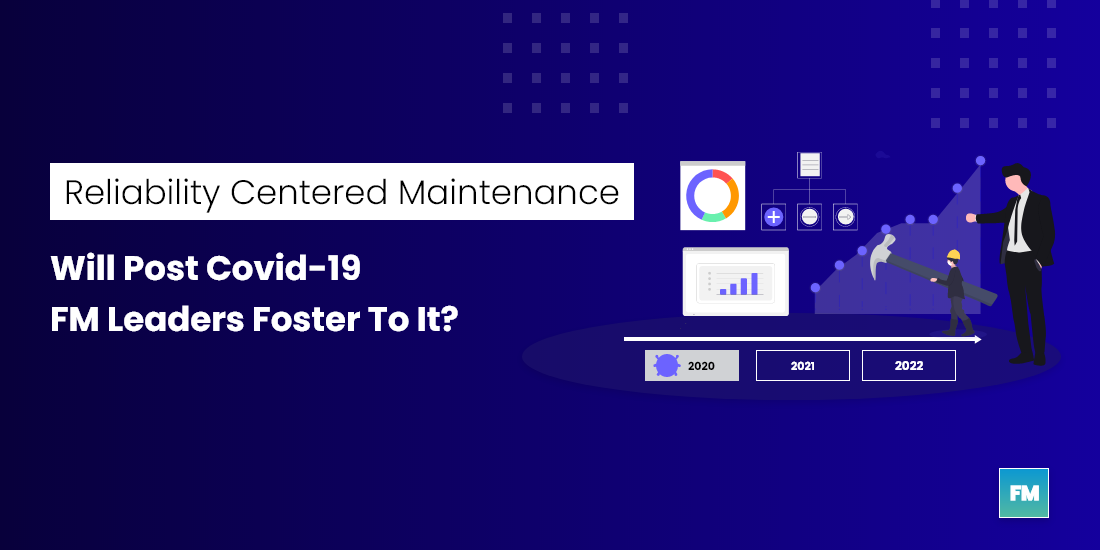An experienced O&M engineer would know what happens to the HVAC setpoints and scheduling when a sudden change in demand occurs. Reasons for the demand distortion could be anything – unexpected weather changes or inflow of the occupants (activities by tenants that influence office asset functioning) reflecting on the cooling demand of the building. Now imagine, if the uncertainty of the demand continues for quite longer than usual and the O&M team is not prepared enough to overcome the cause and action scenario, then it results in,
- Degradation of Asset’s health
- Improper scheduling, increasing energy and resource losses
- Discomfort to tenants caused by mismanagement
And all these continue until building operations are back to normal.
Since the pandemic, most of the facilities have faced a similar fate due to unexpected challenges, crumbling their maintenance strategies. Although there is reopening in most parts of the world, facilities are still failing to reach previous occupancy levels. According to this article on mint, office occupancy in America has slashed by 50% even after 6 months into the pandemic. There are speculations on how covid has permanently changed some of our perceptions and practices to operate and maintain a facility. One thing that still remains unchanged or rather has become the centerpiece of most of the discussions is the reliability in the O&M. Facility managers know that the uncertainty in the CRE operations will remain there for quite some time and hence need to explore innovative and reliability-centered maintenance practices which can adapt with the changing demands.
In Reliability Centered Maintenance Observational data is combined with operating principles to create models in order to understand the behaviour of the equipment, optimize its performance and minimize the life cycle/operational costs.
Two critical components of reliability-based maintenance that differentiate it from the rest.
- Possible modes of asset failure are listed and well documented with reference
- Asset behavior is closely monitored for signs which indicate imminent failure
Now, obviously, Reliability Centered Maintenance as a program would require a lot of asset-specific data and focus on the operation of the individual components which otherwise would not be possible or feasible to collect and monitor. However, if we keep the governing principles of RCM straight and apply them while designing and strategizing asset performance analytics, could reap the benefits of both methodologies.
If we look closely at the steps to implementing RCM and try to correlate them with the asset performance analytics we can come up with a unified approach that is focused on individual assets as well as the network.
Steps to a unified approach
Step 1. Noting down the functions and desired performance standards of each assets
Corresponding in APA: Sensors and other data acquisition infrastructure can capture and record the critical parameters on a real time basis.
Step 2. Possibilities of asset failing to operate and possible failure modes
Each asset will have an audit trail which maintains history of operational behavior, including events of abnormal conditions and the rectifying actions taken
Step 3. Listing the causes of failure and their consequences
Historical data of asset related parameters, system recommendations and the maintenance log filled by the technician can be automatically assessed and come up with the root cause analysis
Step 4. Preventive measures to overcome the failure
Adopting to Predictive algorithms which can forecast events of similar conditions (asset operations, external factors and the reaction of the network elements) in the future and recommend corrective actions

This way one can implement reliability-centred maintenance principles with the right asset performance analytics strategy making RCM a dynamic practice rather than one-time exercise.
Additionally, we can reap the benefits of Life data analysis which refers to the application of statistical methods in determining the reliability behaviour of equipment based on failure time data.
The journey from asset breakdown to repair with APM:
- An issue has been identified:
Air Handling Unit 208 is not working properly, hence the respective cubical is not getting enough cooling.
- FDD in the background
Analytics application senses the abnormal behavior and checks with
- AHU’s operating parameters
- Historical data (audit trail)
- HVAC network parameters
- Identified new failure mode
Since this abnormality does not come under-listed failure modes, the application enlists a new mode of failure and recommends the action.
- The notification has been sent to an operator
An operator inspects the air handling unit and takes the corrective measures
- Restored cooling
Actions on AHU reflect on operating parameters and restore cooling in the cubicle. The root cause has been identified with the help of a network of parameters. Preventive measures have been notified to an operator to stop similar failures in the future.
By this, RCM with asset performance analytics being a unified approach becomes one of the actionable items by FM leaders post Covid-19 and will they foster it?
Want to know more about Asset Performance Strategy for CRE? Attend the virtual session Re: CONNECT organized by UNISSU (sponsored by Xempla) on Jan 07th, 2021 REGISTER HERE

Leave a Reply